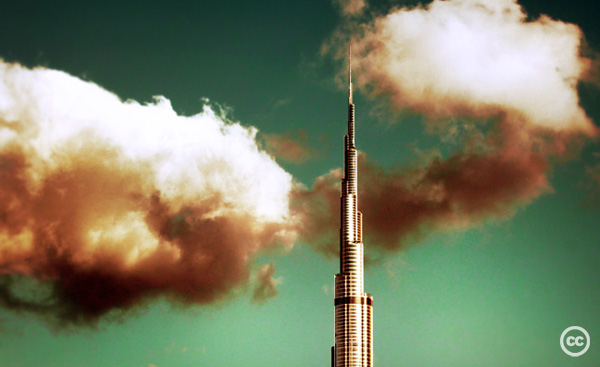
What a difference a year can make in the World Energy Outlook (PDF). Released just last week, the International Energy Agency's press release led with an attention-grabbing clarion cry:
"The World is Locking Itself into an Unsustainable Energy Future Which Would Have Far-Reaching Consequences..."
What consequences do they mean? To start with, they warn that the window to limiting global temperature rise to 2°C -- the threshold at which catastrophic climate change may become inevitable -- is rapidly closing.
Compare that to the headline of the press release for the 2010 report (PDF): "Recent Policy Moves a Start, but Much Stronger Action Is Needed to Accelerate the Transformation of the Global Energy System, Says the IEA's Latest World Energy Outlook."
It's as if this year the IEA wanted to grab us by the shoulders and give us a good shake. And coming from an institution that was long considered a cheerleader for the fossil and nuclear industries, we would do well to pay attention.
This point about "lock-in" is crucial. The costs of building new coal-fired power plants, or extracting oil from harder to reach places, are enormous. So investing in these high-carbon projects means we will need to use them for a very, very long time. Otherwise investors will not get their expected returns -- and after all, isn't that what they're doing it for?
Building a conventional 500 MW coal-fired power plant, for example, costs more than $1 billion these days. It's profitable because the plant is expected to be around for a good 50 years. Think of it like moving to a new city and buying a high-priced house. You wouldn't do it unless you were planning to stay put for a while.
The same thing goes for the Alberta tar sands. According to Shell, which has a 60% stake in the Athabasca project (PDF):
Oil sands mining projects are designed to produce [for] around 40 years, and this very long asset life provides cash flows for returns to shareholders, and to recoup the up front development cost, the on-going operating cost, and the cost of environmental remediation throughout and at the end of the project life.
It has been estimated that $120-220 billion in capital investments will be needed over the next 20 years to produce the oil from Alberta's tar sands. This isn't like building a house, it's more like building a 160-story skyscraper.

But averting runaway climate change is going to force us to pack up and move much sooner than we think, maybe even, as the IEA report suggests, in the next five years.
We desperately need to prevent the kind of infrastructure lock-in that will kill current efforts to reign in climate change. If we don't, our children's future will be in jeopardy. Here are some of the major "lock-in" flashpoints we should be very concerned about:
Coal/South Africa: Greenpeace campaigners were arrested last week for dropping a banner at the construction site of Eskom's Kusile coal plant. Eskom's other mega coal project -- Medupi -- is being funded by the World Bank (read developed country taxpayers) to the tune of $3.75 billion. South Africa already generates 93% of its electricity from coal, so why are they investing in more when renewables could do the job?
Tar Sands/Canada: Despite the Keystone XL pipeline victory last week, it's no time to get complacent. Another proposed pipeline -- the Northern Gateway -- would carry petroleum from Alberta to a new oil tanker port at Kitimat, British Columbia for transport onwards to Asia. According to news reports, the $6.6 billion project has already secured some of the needed funding from Chinese investors.
Coal/USA: Grassroots campaigning to dethrone King Coal is racking up victory after victory. 150 plants have already been stopped, but there is still another 500 to go. Check out this cool map posted by the Sierra Club.
Coal/India: The World Energy Outlook projects that India will double its use of coal by 2035, and will displace the US as the world's second-largest coal consuming country by 2025. A recent report by the Sierra Club and Bank information Center (PDF) says, "India has enough plants in the pipeline to expand its coal-fired capacity a jaw dropping 600 percent over the next two decades."
Deepwater Oil Drilling: From the Arctic to New Zealand, activists around the world are protesting the expansion of offshore drilling into deeper and more treacherous waters. Analysts believe that the Arctic, Gulf of Mexico and areas off of Brazil and West Africa represent the most important new deepwater frontiers. One analyst forecasts that by 2015, $126 billion will be invested to get at the oil off of Brazil and West Africa alone.
And lest we forget, China is the world's leading producer as well as consumer of coal. It is likely to be responsible for more than half of the growth in global demand for coal through 2020 according to the IEA.
I could go on. But as the Agency's Chief Economist Fatih Birol says:
As each year passes without clear signals to drive investment in clean energy, the "lock-in" of high carbon infrastructure is making it harder and more expensive to meet our energy security and climate goals.
By 2017, the IEA projects that all of the CO2 we can afford to emit will already be locked-in. That means building no new CO2-emitting infrastructure after that, or we will need to start dismantling the existing stuff.
In other words, not only are we planning to build the skyscraper, we do so knowing full well that it will need to be torn down in just a few years time. Call it dumb. Call it insane... why would any banker in his right mind finance these outlandish and dangerous propositions?
Don't answer that...
